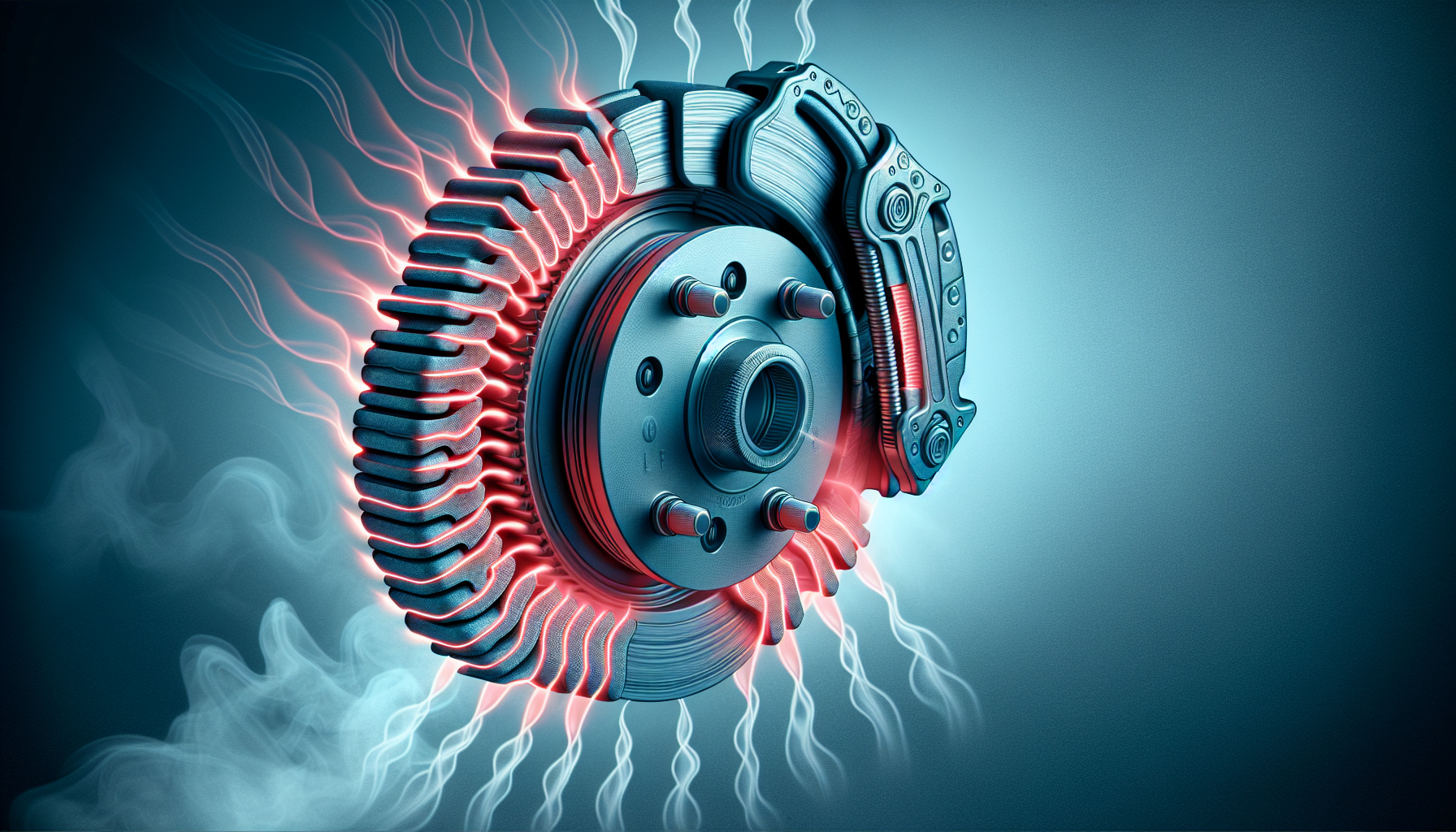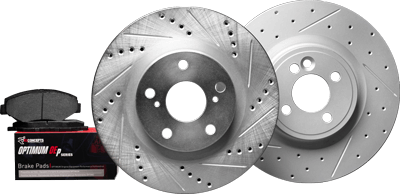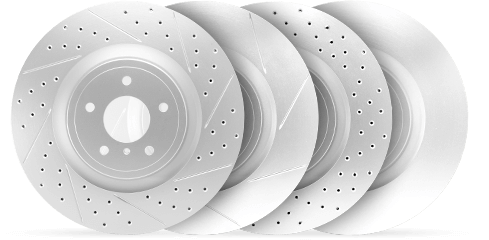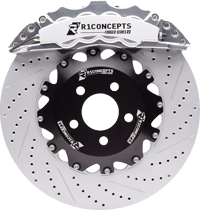Experiencing a pulsating sensation when braking can be more than just annoying; it can signal underlying issues within your car’s braking system.
This article written exclusively by R1 concepts dives into what causes pulsating brakes, discussing each factor in detail and offering practical advice for diagnosis and repair—without overwhelming jargon or unnecessary details.
Whether you are a new car owner or someone who just needs refreshing, this guide will help you learn more about pulsating brakes.
Key Takeaways
- Brake pulsation is often caused by warped rotors or wear and tear of brake pads, which lead to an uneven braking experience and can be accompanied by grinding noises or restricted movement within the caliper bracket.
- Pulsating brakes can affect vehicle control by causing vibrations in the steering wheel, indicating issues with Disc Thickness Variation (DTV) or front-rotor stress, which compromises the vehicle’s overall handling and safety.
- Excessive heat is a major factor affecting brake performance, potentially causing brake fade and rotor hot spots, which lead to pulsation; routine maintenance and proper braking habits can mitigate these issues and prolong brake system health.
The Culprits Behind Pulsating Brakes
When you feel a vibration while braking, it’s often due to issues in either the brake rotor or brake pad, but it could mean other things like a problem in the brake system or just debris within your brakes.
We’ve listed down below the possible issues and what you can do to solve it.
Brake Pad Wear and Tear
Brake pulsation often happens when brake pads wear out unevenly. This can be because they were installed incorrectly or they’re just old.
The effectiveness of your vehicle’s braking system relies heavily on the condition of its brake pads. As time goes by, these parts can wear down and cause issues with the overall functionality of the brakes. When this happens, there may be metal-on-metal contact between the rotors and worn out brake pads, resulting in pulsation sensations as well as grinding noises.
Another reason for experiencing pulsating brakes could be due to a stuck or restricted pad within the caliper bracket leading to uneven wear patterns.
Excessive rust accumulation can also hinder smooth movement of brake pads inside their respective brackets, causing constant pressure on rotors, which contributes significantly towards creating a pulsing effect while driving.
Rotor’s Uneven Thickness
Uneven rotor thickness, also known as Disc Thickness Variation (DTV), is a major cause of brake pulsation. This issue can arise due to various factors such as uneven clamping forces, incorrect installation of the rotors, misalignment of brake calipers, and irregular patterns in friction.
Uneven clamping forces can cause the brake pads to apply pressure inconsistently across the rotor surface, leading to uneven wear and, consequently, variations in disc thickness.
Incorrect installation of the rotors may result in improper torque on the lug nuts or mounting bolts, which can warp the rotor over time and create thickness variation.
Misalignment of brake calipers, often due to worn or damaged hardware, can also cause the brake pads to contact the rotor unevenly, exacerbating wear patterns.
Lastly, irregular patterns in friction can be caused by a variety of issues, including the use of mismatched or low-quality brake pads, which can lead to hot spots on the rotor surface and contribute to disc thickness variation (DTV).
Most of these issues can cause excessive lateral runout, where the rotor is wobbling as it spins. Excessive lateral runout on the brake rotor can lead to uneven thickness and result in pulsating brakes.
Caliper Conundrums
Calipers are a crucial component of your car’s brake system, but they can also cause issues. If the caliper slides become stuck or frozen, it can prevent the brake pads from fully releasing and lead to uneven wear that contributes to pulsating brakes.
When the brake caliper piston malfunctions, it may interfere with proper contact between the pad and rotor surface. This constant rubbing and overheating can ultimately result in pulsation during braking. Dry or corroded guide pins on the calipers could cause misalignment of the pads against the rotor, creating vibrations felt through steering feedback.
Steering Wheel Shakes: Linking Brake Pulsation to Vehicle Control

Have you ever experienced shaking in your steering wheel while braking? This is a result of the ripple effect caused by brake pulsation. When there is Disc Thickness Variation (DTV), it can lead to an uneven distribution of brake torque between the left and right axles, resulting in vibrations felt through the steering wheel.
This vibration becomes more noticeable when decelerating on highways due to rotors becoming warped from excessive heat during braking. You may feel this as shaking or pulsing sensations coming from not only the steering wheel, but also possibly through the pedals or even in your seat.
These symptoms are all indications that there could be issues with rotor warping and irregularities causing unpredictable movements during braking situations. Listed below are some of the issues that link to the problem.
Front Rotors Under Stress
Front brake rotors are an essential component of the braking system in your vehicle. They carry a significant amount of the braking force, especially for heavier vehicles like SUVs and trucks. As they play a vital role, front rotors are under great strain and thus more prone to pulsation problems. Rear wheel rotors also contribute to overall braking performance.
The substantial stress on front brake rotors can cause warping, which is often responsible for pulsating sensations felt through the brake pedal and steering wheel wobbling. This issue becomes most noticeable when decelerating at higher speeds on highways, indicating potential trouble with your front brakes.
Impact on Vehicle Handling
Brake pulsation has a significant impact on not only the brakes of your vehicle, but also its overall handling. When brake pads are unevenly gripped onto warped rotors, it can cause a shaking feeling in the steering wheel which affects control of the vehicle. If front brake discs become distorted, this vibration can be felt throughout the steering mechanism and compromise handling while braking quickly.
The presence of pulsating brakes greatly hinders a driver’s ability to maintain smooth control during braking. Addressing the root causes is crucial for both ensuring a comfortable ride and prioritizing safety measures.
The Heat Factor: How Temperature Affects Your Brakes

Excessive heat can cause brake fade and reduce the performance of brakes by boiling the brake fluid and compromising hydraulic function. This problem is especially common in high-performance applications where ceramic and stainless steel are preferred materials for their ability to manage heat effectively.
Considering these factors, managing temperature becomes crucial in maintaining peak brake performance and avoiding pulsation issues. Let’s explore how temperature impacts brakes and the role cooling fins play in this process.
Cooling Fins Explained
The unsung heroes of your braking system are the cooling fins, silently working to regulate heat. They play a crucial role in preventing brake components such as pads and calipers from overheating and causing pulsation during braking.
Typically made out of aluminum for its efficient transfer of heat, cooling fins quickly absorb and release high temperatures generated during braking. There have been doubts about their effectiveness due to their relatively small size compared to the overall surface area of rotors when it comes to reducing temperature levels.
Heat Buildup and Brake Performance
Excessive heat not only causes discomfort for drivers, but it also has a negative impact on their braking system. The buildup of heat can result in the formation of grooves or scores known as “hot spots” on brake rotors. These hot spots may cause minor discoloration and create friction that leads to pulsating brakes.
When there is malfunctioning in the brake caliper pistons, they are unable to release the pads from the rotor effectively which can lead to overheating and ultimately result in pulsating brakes. Rust accumulation can cause brake pads to stick onto rotors, causing continuous pressure and generating heat, resulting in brake pulsation.
Diagnosing Brake Pulsation: Tools and Techniques
While recognizing brake pulsation is not difficult, diagnosing the issue can be a more intricate process. It requires a combination of visual assessments, precise measurements and assistance from professionals.
Let’s explore some common methods and tools used for diagnosis, such as measuring with a dial indicator or inspecting visually.
This part of the blog is just a preliminary, we have a full detail of diagnosing your brakes using useful method here.
Visual Inspection of Brake Surfaces
To diagnose brake pulsation, the first essential step is visual inspection. This involves examining both the rotors and pads for any signs of damage or wear that could cause braking to feel uneven.
Specifically, it’s important to check for grooves, pitting, and high spots on the brake rotors as these can contribute to pulsating brakes. The state of the brake pads should also be assessed, they should not be worn down beyond a quarter inch in order to prevent pulsation and ensure proper functioning. Inspecting both sides of each pad will confirm if there is even wear, which plays a role in preventing brake pulsations.
Measuring Runout with a Dial Indicator
An essential tool for assessing rotor runout is the dial indicator.
It’s worth noting that although it’s possible to use a dial indicator on your own, it’s highly recommended to have this task performed by an experienced professional.
Below, we provide a brief guide intended for those who are new to using a dial indicator, to give an idea of how it operates:
- To obtain accurate readings, it’s important to reset or zero out any previous data before taking measurements with a dial indicator.
- Install and position the dial indicator on the vehicle so that its plunger rests against a brake rotor surface.
- While rotating, observe how much movement occurs according to the reading shown by the dial indicator.
- The measurement indicates lateral displacement of braking surface known as rotor runout.
Checking multiple points around rotors is necessary since they may have varying degrees of runout at different locations causing uneven braking performance and pulsations.
Resurfacing might be needed if there are differences greater than 0.001 inch in thickness variation among sections of brake rotors.
Repairing Pulsating Brakes: When to Replace vs. Resurface
Once the cause of brake pulsation is identified, steps can be taken to correct it. This typically involves choosing between resurfacing or replacing the rotors, taking into account factors like rotor thickness and manufacturer recommendations.
Resurfacing can improve braking performance and prolong a rotor’s lifespan. On the other hand, replacing worn out brake rotors restores their original condition and avoids any potential changes in characteristics or performance that may occur with resurfacing.
Both options have advantages and disadvantages, so the most suitable approach depends on each individual situation.
Resurfacing Rotors: Pros and Cons
Resurfacing rotors is a viable option for addressing minor warping and surface irregularities. This process involves using machinery to smooth out the rotor’s surface, which can save time and money compared to replacing them entirely.
It’s important to note that resurfacing should only be done a limited number of times as excessive machining can make the rotor too thin for safe use. While some car manufacturers advise against resurfacing and suggest complete replacement instead, others do allow for it. It would be best to seek guidance from professionals or your vehicle’s dealership before making any decisions on whether to opt for resurfacing or replacing your rotors.
Replacing Rotors and Pads Together
In some cases, the most suitable solution is to change both brake rotors and pads simultaneously. This approach guarantees that the new pads have a smooth surface for optimal braking performance by ensuring proper contact.
Continuing to use old rotors with new brake pads, or vice versa, can result in uneven wear and compromise the effectiveness of your brakes. Replacing both components together may be more cost-effective in the long run as it decreases future expenses and reduces frequent maintenance visits.
Preventative Measures: Keeping Your Brakes Pulsation-Free
The famous saying “prevention is better than cure” holds true when it comes to brake pulsation. To avoid experiencing a pulsating brake pedal, regular inspections and proper braking techniques are crucial.
There are specific steps that can be taken to prevent brake pedal pulsation, such as refraining from sudden stops, allowing the brakes time to cool down properly before use again, and ensuring timely maintenance of the entire braking system. By following these measures diligently, one can effectively prevent any issues with their brakes, including unwanted vibrations in the pedals.
Regular Brake Maintenance
Regular maintenance of brakes is crucial in preventing brake pulsation. It is recommended to have your brakes checked every six months to ensure their effectiveness and avoid issues like pulsation.
It’s important to regularly service the entire brake system and be mindful of driving habits as they greatly impact the lifespan of brake components. Following manufacturer recommendations and consulting with qualified professionals can help maintain a smooth braking experience without any signs of pulsation.
Proper Braking Habits
Your car’s braking system can be affected by the way you brake. If you apply brakes early and gently, it can extend the lifespan of your pads and rotors. To reduce stress on the brake system, try to coast before applying brakes to slow down gradually.
To maintain even wear on your braking components and prolong their longevity, it is important to use gradual pressure when pressing on the brake pedal. Being aware of road conditions and avoiding sudden stops also helps in this regard. By following these good practices for braking, you can keep your vehicle’s pulsating brake system healthy and address any issues with fixing its pulsation problems.
Summary
Brake pulsation, a common problem experienced by drivers, causes the brake pedal or steering wheel to feel like it is vibrating. The root cause of this issue can vary and may include problems such as warped rotors, worn pads, or issues with calipers. To prevent brake pulsation from occurring, regularly maintaining brakes and using proper braking techniques are essential. Whether repairing damaged rotors through resurfacing or replacing them entirely along with new pads altogether, addressing this issue is crucial for ensuring your vehicle’s optimal safety and performance.
Frequently Asked Questions
How do you fix pulsating brakes?
Replacing the brake rotors is necessary to address pulsating brakes, as they may be damaged and pose a danger for driving. In order to fix brake pulsation, replacing the rotors cannot be avoided.
To resolve issues with braking pulsations, it is crucial to replace warped or faulty brake rotors rather than attempting any other fixes that may not effectively solve the problem. Neglecting this.
Which is the most common cause of a pulsating brake pedal?
Warped brake rotors are the usual reason behind a pulsating brake pedal, which can result in hazardous driving situations if not addressed immediately.
Are pulsating brakes front or rear?
Brake pulsation is primarily experienced in the front brakes due to the larger amount of braking force being applied. This results in faster wear and tear on the front rotors compared to those at the rear. It is common for brake issues such as pulsation to occur mainly with these components rather than throughout all parts of the braking system.
What is brake pulsation?
Brake pulsation refers to the tremors felt in the brake pedal or steering wheel upon engaging with the brakes. This problem is typically attributed to faults within various components of the braking system, causing a vibrating sensation throughout these parts.
How can I prevent brake pulsation?
In order to avoid brake pulsation, it is important to regularly service your brakes and follow correct braking techniques. This includes gently applying the brakes early on and coasting before fully engaging them.
Following these steps can effectively prevent brake pulsation in your car or other vehicle.









